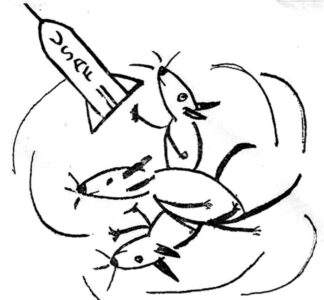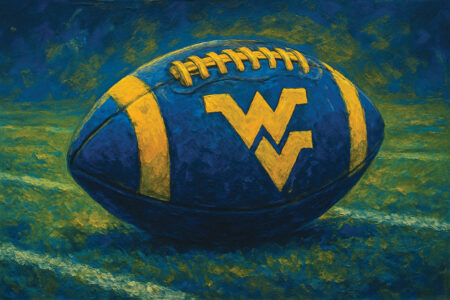Backyard Gardener: Turf-type fescue grasses for the lawn

(Backyard Gardener - Photo Illustration - MetroCreativeConnection)
Hello Mid-Ohio Valley Farmers and Gardeners! What a stretch of rain rolling in the second week of August. I hope many of you took advantage of several days of dry, sunny weather before all the moisture arrived.
Choosing the right grass seed for your yard will affect your home for years to come. Mid-August and September are a great time to reseed or overseed the lawn. It has many benefits compared to spring seedings, including fast seed germination and rapid growth in warm soil compared to early spring.
In addition, there is less competition from weeds and more abundant soil moisture (typically). The warm days and cool nights of autumn provide ideal conditions for seedling growth.
Many homeowners experience the agony of failed grass plantings in spring due to hot, dry conditions in June or from competition from weeds. Spring seedings have to mature quickly and establish a good root system to prepare for the hot and dry weather of summer.
This week I want to discuss turf-type tall fescues for the lawn. This is my go to grass seed for the yard because of its ability to handle heavy traffic, hot temperatures and drought.
Common grasses for the lawn include bluegrass, perennial ryegrass, and the fescues. However, if your goal is a low maintenance lawn that still looks great, turf-type tall fescue is the best choice.
How are turf-type tall fescues different than Kentucky 31? The Kentucky 31 tall fescue is considered a forage-type fescue and is seen along roadsides and in pasture and hay fields across the Mid-Ohio Valley. It is a cheaper seed to purchase when compared to other turf-type fescues, but it does have a place as a lawn type grass.
Many backyard gardeners and farmers still use Kentucky 31 tall fescue for the lawn. It is a tough, drought resistance grass and is also a favorite to seed down football and other athletic fields because it can take a lot of abuse.
Forage type fescue are more of a bunch type grass, but when seeded at higher rates (10 pounds per 1,000 square feet) they can provide excellent coverage when mowed at 4 inches. Higher seeding rates create a crowding effect which makes this grass appear finer in texture.
Folks, again I recommend setting the mower deck at 3-4 inches. This will shade out weeds, reduce water loss to evaporation and assist in building a stronger root system that is more tolerant to drought. I guarantee you will have a healthier, more attractive looking lawn.
Turf-type tall fescues are the most improved tall fescues and are used primarily for the lawn. They have been developed by seed companies to provide a finer textured leaf blade which is somewhere between the forage-type and fine leaf fescues and are generally more aesthetically pleasing.
Their leaf blades are slightly wider than a Kentucky bluegrass. The color is usually a deep emerald green and many newer varieties will provide disease resistance to brown patch. Turf-type fescues are considered a bunch-type grass. However, some companies have developed several rhizomatous tall fescue varieties producing short rhizomes, which allowing some spreading capabilities.
Dozens of improved turf-type varieties are available and many come in a blend with three or four improved varieties in the mix. Many of these are available at your local hardware store or home improvement retailer.
A mixture of tall fescue (90%) and Kentucky bluegrass (10%) will help provide a uniform establishment. If you have shaded areas in the yard, you may want to use a mix also including fine fescues such as creeping red fescue which will tolerate shade. Some blends may include perennial ryegrass, but do not exceed 20% in the blend due to disease issues with this grass.
However, keep in mind although tall fescue has excellent drought and traffic tolerance, it has a bunch-type growth compared to the sod forming characteristics of Kentucky bluegrass. It may produce clumpy and uneven lawn when subjected to traffic and insufficient water.
If this is a problem you can interseed with additional tall fescue and provide temporary irrigation to regain adequate turf density. Turf-type fescues may need interseeded every three to five years to reduce appearing clumpy.
Turf-type tall fescues offer a great low maintenance alternative to Kentucky bluegrass, and are recommended in non-irrigated lawns.
Always keep soil fertility in mind. You can have the highest quality, most disease and drought resistance grass variety money can buy to seed the lawn with, but if your pH is not at least 6.2 and soil fertility is low, you are spending money in the wrong place.
Lime first, then fertilize. Implementing the results of your soil test for the lawn can save you hundreds of dollars. Fall is a great time to apply soil amendments such as lime, fertilizer and compost. Enjoy your beautiful lawn! Contact me at the Wood County WVU
For more information, call the Extension Office 304-424-1960 or e-mail me at jj.barrett@mail.wvu.edu with questions. Good Luck and until next time, Happy Gardening!






